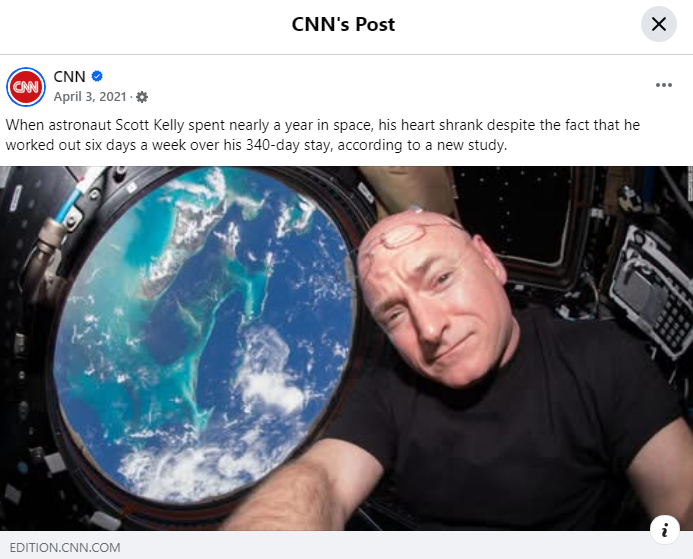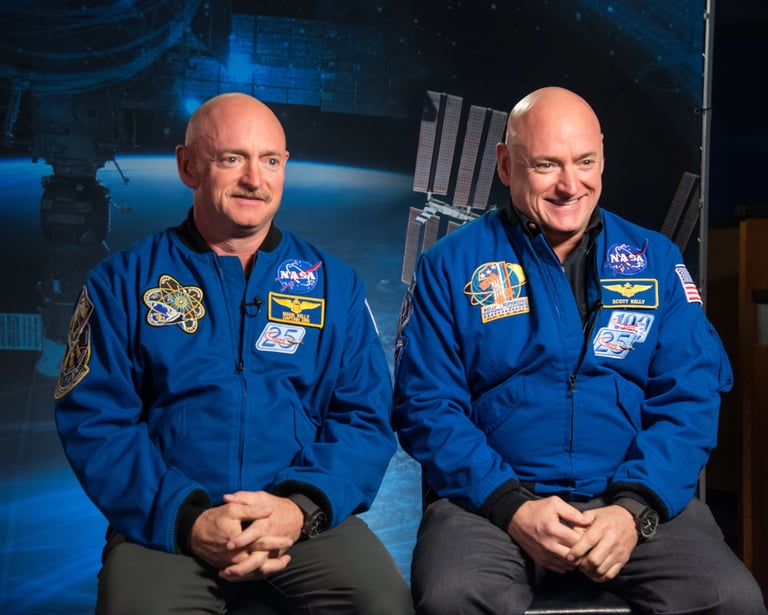The Effects of Prolonged Weightlessness on the Human Body




NASA Twins Study Verifies Long-Term Health Effects of Space Travel
https://www.space.com/39952-nasa-twin-study-spaceflight-health-effects.html
published March 12, 2018
NASA's Twins Study just hit another major milestone.
The long-term investigation of Scott Kelly's health after nearly a year in space shows that the early findings from 2017 were valid — with some new insights into possible health issues for future Mars travelers.
The astronaut spent 340 days on the International Space Station in 2015 to 2016, along with Russian crewmate Mikhail Kornienko.
The milestone flight was the longest single flight of any American, providing investigators an opportunity to see how human health changes in nearly a year.
But there was another advantage to using Scott as a test subject; he has a twin brother, Mark, who flew as an astronaut during the space shuttle program.
So while Scott flew on the International Space Station, investigators collected data from him and from Mark, who remained on the ground.
NASA's Twins Study just hit another major milestone.
The long-term investigation of Scott Kelly's health after nearly a year in space shows that the early findings from 2017 were valid — with some new insights into possible health issues for future Mars travelers.
The astronaut spent 340 days on the International Space Station in 2015 to 2016, along with Russian crewmate Mikhail Kornienko.
The milestone flight was the longest single flight of any American, providing investigators an opportunity to see how human health changes in nearly a year.
But there was another advantage to using Scott as a test subject; he has a twin brother, Mark, who flew as an astronaut during the space shuttle program.
So while Scott flew on the International Space Station, investigators collected data from him and from Mark, who remained on the ground.
Scott's telomeres — or the ends of chromosomes that shorten as people get older — got a lot longer in space. This finding was known in 2017, but investigators confirmed it and also discovered that most of the telomeres got shorter again within two days of Scott's landing.
About 7 percent of Scott's genes may have longer-term changes in expression after spaceflight, in areas such as DNA repair, the immune system, how bones are formed, hypoxia (an oxygen deficiency in the tissues) and hypercapnia (excessive carbon dioxide in the bloodstream). The other 93 percent of his genes quickly returned to normal.
Scott had no significant cognitive performance decline in space after one year, compared with Mark or with typical astronauts who fly a six-month mission. Investigators did, however, see pronounced decreases in Scott's cognitive speed and accuracy after he landed. This might have happened because of "re-exposure and adjustment to Earth’s gravity, and the busy schedule that enveloped Scott after his mission," NASA officials said.
The researchers also saw that spaceflight is linked with nutrient shifts, oxygen deprivation stress and more inflammation. They gathered the evidence after looking at "large numbers" of proteins (chains of amino acids), cytokines (substances secreted by cells in the immune system) and metabolites (substances related to metabolism) in Scott's body.
"All of these findings are being integrated and summarized by the research teams; researchers are also evaluating the possible impact that these findings will have on future space travel beyond low Earth orbit," NASA officials said.
More details will be released in an integrated summary paper that will be published later this year. NASA stated that "a series of smaller papers grouped by related research areas" will also be disclosed at a later time.
Weightlessness causes several key systems of the body to relax, as it is no longer fighting the pull of gravity.
Astronauts' sense of up and down gets confused, NASA said, because the vestibular system no longer can figure out where the ground and the ceiling are.
Spacecraft designers take this into account; the ISS, for example, has all of its writing on the walls pointing in the same direction.
Crewmembers also experience a disruption in their proprioceptive system, which tells where arms, legs and other parts of the body are oriented relative to each other.
"The first night in space when I was drifting off to sleep," one Apollo astronaut said in a NASA interview:
"I suddenly realized that I had lost track of ... my arms and legs. For all my mind could tell, my limbs were not there."
This disorientation can cause astronauts to become queasy for a few days.
One famous example took place during Apollo 9 in 1969.
Rusty Schweickart had to change a planned spacewalk because he was feeling ill.
The concern was that if he vomited while in his spacesuit, the fluid could spread through his helmet (making it hard to see) or interfere with the breathing apparatus and cause him to potentially choke to death.
Spacecraft also must be designed to take microgravity into account.
During spacewalks, for example, astronauts require extra handholds and footholds on the exterior of their spacecraft so that they can anchor themselves and not float away.
(Astronauts also attach to them in tethers in case they lose their grip.)
Long-term health effects
Astronauts in space for weeks to months can run into trouble.
Calcium in bones secretes out through urine.
As the bones weaken, astronauts are more susceptible to breaking them if they slip and fall, just like people with osteoporosis.
Muscles also lose mass.
But time on the International Space Station has helped NASA run studies on how astronaut health is affected by time in weightlessness.
Already the agency has made changes.
For example, it replaced the interim Resistive Exercise Device (iRED) with the Advanced Resistive Exercise Device in 2008, allowing astronauts to do weight-lifting without "maxing out" their top weight.
ARED is linked to better outcomes in bone density and muscle strength, although all conclusions in space are hard to draw (in the general since) since the astronaut population is fit already and extremely small.
Astronauts typically have an allocated exercise period of two hours a day in space to counteract these effects; this time not only includes cardiovascular exercise and weight-lifting, but also time to change clothes and set up or take down equipment.
Despite exercise, it still takes months of rehabilitation to adjust on Earth after a typical six-month space mission.
More recently, doctors have discovered eye pressure changes in orbit.
NASA has tracked vision changes in astronauts that were on the space station, but nothing so serious as to cause concern.
Its cause is still under investigation, although one possible culprit includes spinal fluid that stays constant in microgravity instead of the normal shifting that takes place on Earth as you lie down or stand up.
In addition to spinal fluid, a 2017 study tracked changes in both short-flight and long-flight astronauts.
Some studies also point out that astronauts experience a slightly elevated level of carbon dioxide on the station because of the filtration system; that gas may also contribute to eye problems.
Former NASA astronaut Scott Kelly participated in a rare, one-year mission to the International Space Station in 2015-16.
His twin brother and former NASA astronaut Mark (who retired before Scott) agreed to participate, along with Scott, in several "twin experiments" to compare Scott's health in space with that of Mark's on the ground.
Preliminary results from one study released in October 2017 showed that different genes turn on or off in space.
Other studies discussed earlier that year revealed subtle changes as well.
For example, telomeres (which slow down chromosome deterioration) in Scott temporarily got longer in space.
Scott also had a slight deterioration in cognitive ability (thinking speed and accuracy) and bone formation, although not enough to be concerning.
Scientists who work with microgravity health experiments note that often the changes seen in orbit mimic what happens as people naturally age, although often the processes are different.
A group of Canadian researchers — some of whom have expertise in space medicine — have access to a long-term health facility for seniors at the University of Waterloo.
There, researchers can measure seniors in their residences rather than bringing them into a lab, where the conditions are artificial and can mask or exaggerate certain health conditions.
Political news, commentary for the enraged reader
contact@dailybeastie.com
© 2025 DailyBeastie.Com - All rights reserved.



